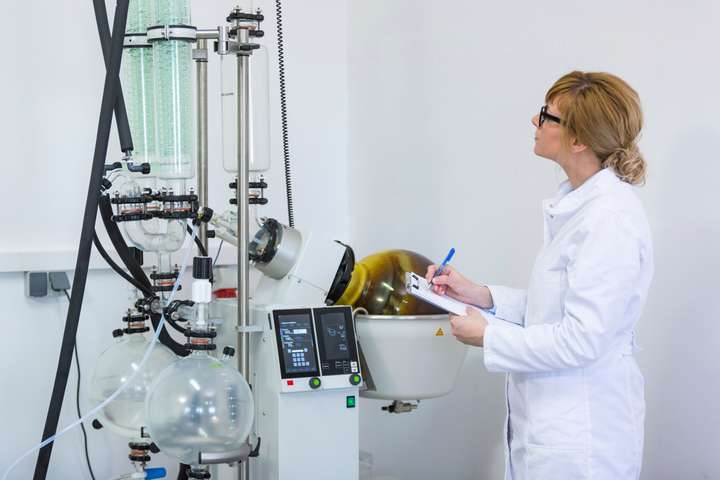It’s no secret that the cannabis industry is booming. As more states legalize marijuana, curious people are eager to learn about cannabis and the industry as a whole. Cannabis can be smoked or eaten for various reasons, including relaxation, focus, pain relief, and even to relieve symptoms brought on by cancer treatment! But what are each of these effects due to? How does this plant work? And why should you care? The answers lie within the chemical compounds found in cannabis plants. These chemicals interact with our brain’s endocannabinoid system, which controls moods and other bodily functions like hunger and sleep cycles by mimicking substances naturally made by our bodies called cannabinoids. Different consumption methods affect the experience; for example, edibles have a longer onset of about 2-3 hours, whereas dab wax pens, a vape designed for cannabis wax that is available at Grasscity, only take 2-10 minutes. Here’s a closer look at how this works.
What is Cannabis, and What are Cannabinoids
Cannabis is a collective term for three psychoactive plants: Cannabis sativa, Cannabis indica, and Cannabis ruderalis. When these plants are picked and dried, one of the world’s most extensively used drugs develops. Some call it weed, others call it pot, but many call it marijuana. Typically, cannabis is consumed for its sedative and calming properties. It is also recommended in several places to treat various medical issues, including chronic pain, glaucoma, and lack of appetite.

Cannabis has about 120 constituents, together referred to as cannabinoids. The term “cannabinoids” refers to any chemical compound, regardless of structure or origin, that binds to the body’s and brain’s cannabinoid receptors and has similar effects to those produced by the Cannabis Sativa plant. While experts are still unsure of the function of each cannabinoid, they do have a good grasp of two of them, cannabidiol (CBD) and tetrahydrocannabinol (THC). CBD is a psychoactive cannabinoid, but it is not intoxicating or euphoric, which means it will not cause you to feel “high.” It is frequently used to assist in the reduction of inflammation and pain. Additionally, it may help with nausea, migraines, seizures, and anxiety. THC is the primary psychoactive compound. THC is primarily responsible for the “high” linked with cannabis.
How Do Cannabinoids Work in the Body
Cannabinoids, like opioids, interact with certain receptors found throughout the central nervous system. In simpler terms, Cannabinoids affect how cells transmit, receive, and process messages. When cannabis is smoked or vaporized, the effects are rapid, whereas eating cannabis takes an hour or two to kick in. The endocannabinoid system is a distinct communication system found in the brain and body involved in various critical processes. It is composed of naturally occurring molecules known as cannabinoids and the pathways through which they interact. These components act in coordination to modulate various functions, including mood, memory, sleep, and appetite.
Why Are There Different Types Of Cannabis Strains
Cannabis indica and Cannabis sativa are the two wide varieties of cannabis. The many forms of weed differ in terms of the type of weed plant from which they originate and their effects on a person or the high they provide. Cannabis ruderalis, a third strain, was utilized to make weed recently. Cannabis Indica plants are often small and bushy, with broad leaves. Cannabis Indica-derived medicines contain a higher concentration of CBD and a lower concentration of THC. These strains are best used at night because they aid with relieving pain and sleep. Cannabis Sativa plants are tall and slender, with finely divided leaves. Additionally, Sativa plants are typically a paler shade of green than other strains. These strains typically contain more THC than CDB. Sativa users discover that their imagination and creativity enhance their high. Cannabis ruderalis contains less THC and is therefore largely used for therapeutic purposes.
The Health Benefits to Using Cannabis
According to studies, Cannabis has been proven to be helpful in the treatment of various illnesses. Most people are using Cannabis because of the effective health benefits it can give to them. Medicinal cannabis is most commonly used to treat pain. Though it isn’t strong enough to treat severe pain, it is quite effective for chronic pain afflicts millions of people, especially as they age. Cannabis can also improve lung capacity, help lose weight, fight cancer, help treat depression, alleviate anxiety, and be an effective muscle relaxant. This is not a compendium but rather a summary of the medical conditions for which cannabis may be used. As with any remedy, efficacy claims should be taken seriously and with caution.
Conclusion
Cannabis is a complex and interesting plant, with hundreds of different chemical components responsible for everything from its look to its effects. While some individuals only think about the effects of cannabinoids like THC or CBD when they go to the dispensary, there are literally hundreds of other factors that might influence what a cannabis strain or product does. Doing some research to understand better the makeup of a strain will improve your overall experience by ensuring that your intended objectives are fulfilled.





